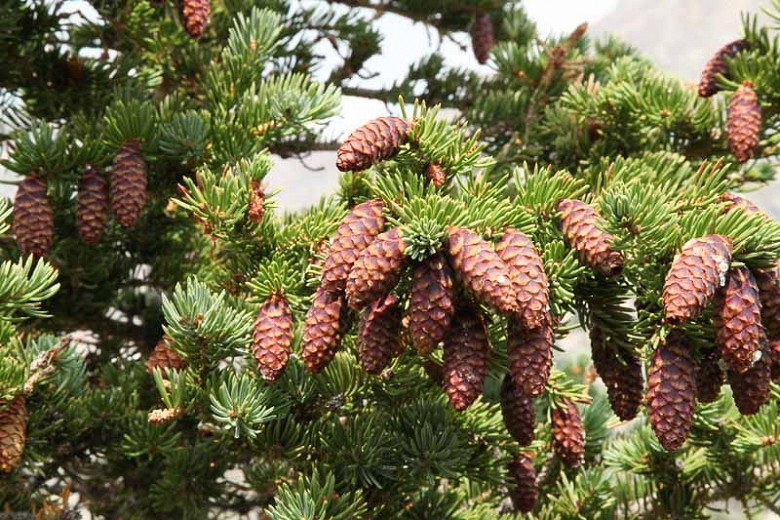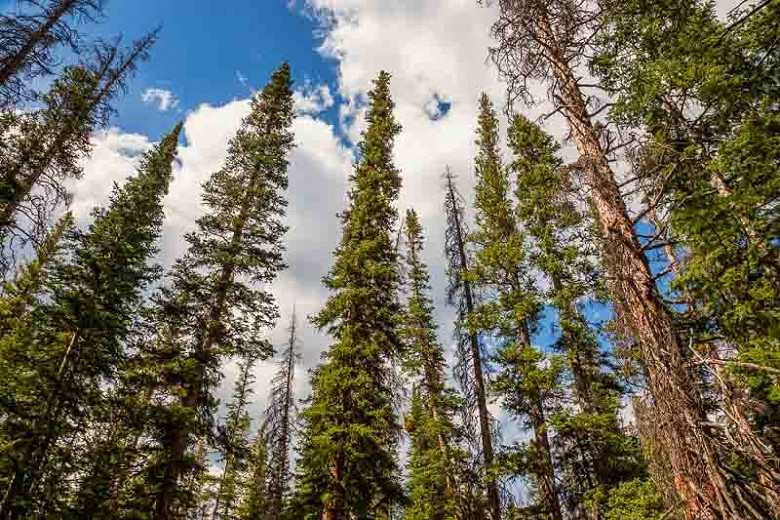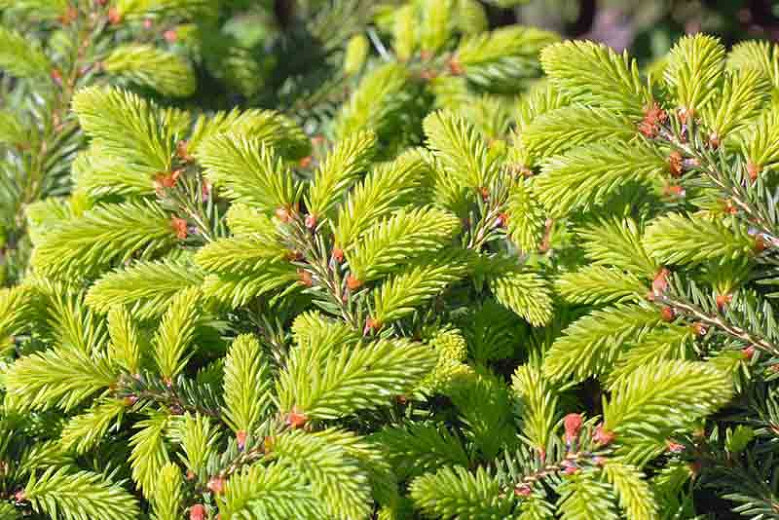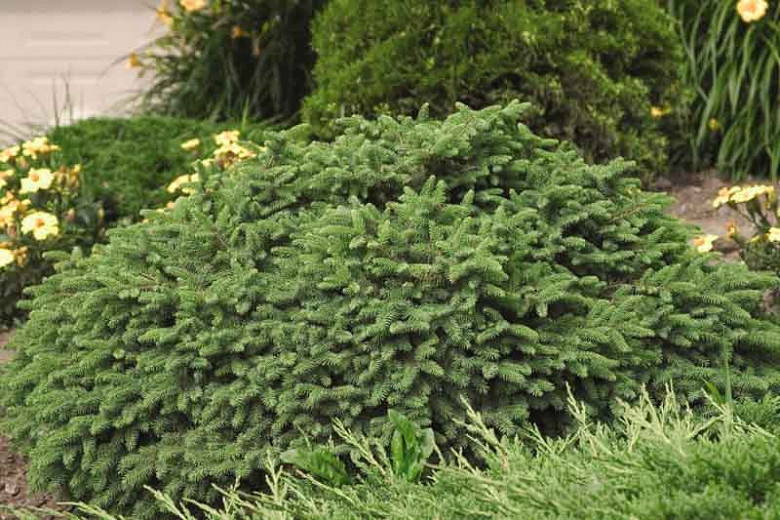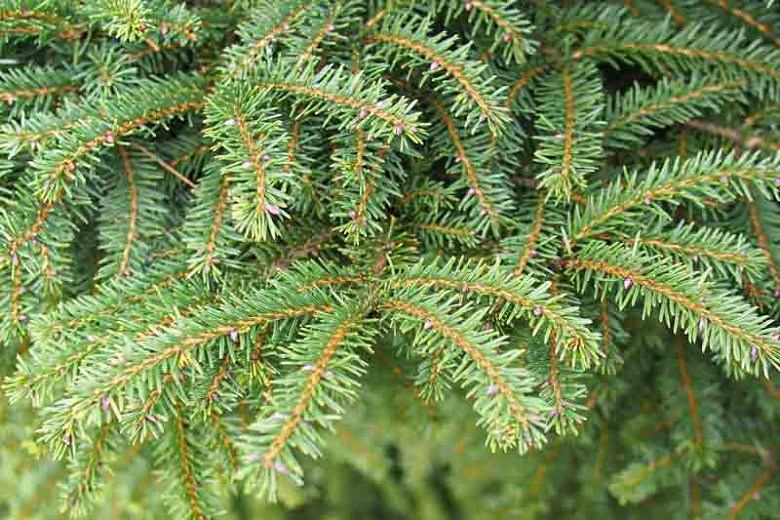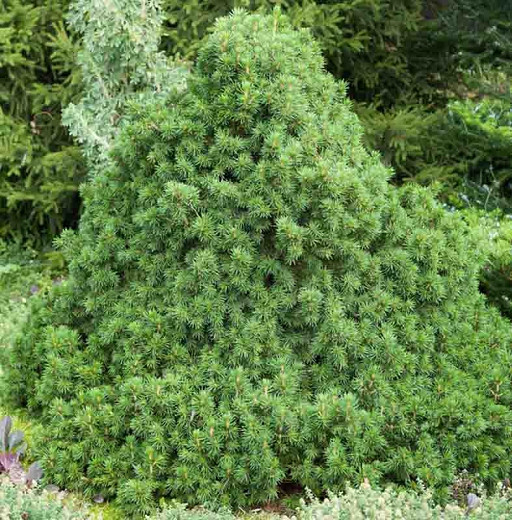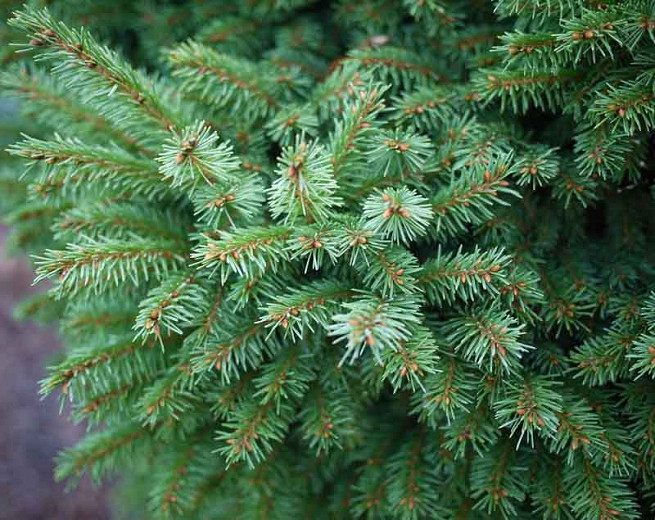Picea engelmannii (Engelmann Spruce)
Picea engelmannii (Engelmann Spruce) is a large evergreen conifer of narrowly conical habit in youth, becoming cylindrical with age. Its branches descend to sweep the ground and conceal the trunk. The stiff and sharp-pointed, 4-sided needles are blue-green above and blue-white underneath. Thin and scaly, the reddish-brown bark is flaking off in small circular plates. The pendulous, slender, cylindrical seed cones, up to 3 in. long (7 cm), are violet to deep purple, ripening buff-brown 4 to 7 months after pollination. Long-lived, Engelmann spruce will grow steadily for 300 years, long after the growth of most associated tree species slows down. Its resonant qualities make the wood of Engelmann Spruce valuable for piano sounding boards and violins.
- Grows up to 70-100 ft. tall (21-30 m) and 10-15 ft. wide (3-5 m).
- Performs best in full sun in moist, well-drained soils. Prefers cool climates and will struggle in hot and humid climate areas.
- No serious pest and disease issues. Keep an eye out for wood rot, brown rot and spruce budworm.
- No pruning required.
- Propagate by grafting or semi-hardwood cuttings.
- Native to western North America.
Requirements
| Hardiness | 3 – 8 |
|---|---|
| Heat Zones | 1 – 8 |
| Climate Zones | 1, 1A, 1B, 2, 2A, 2B, 3, 3A, 3B, 4, 5, 6, 7, 10, 14, 15, 16, 17, A2, A3 |
| Plant Type | Conifers, Trees |
| Plant Family | Picea – Spruces |
| Exposure | Full Sun |
| Season of Interest | Spring (Early,Mid,Late)Summer (Early,Mid,Late)FallWinter |
| Height | 70' – 100' (21m – 30m) |
| Spread | 10' – 15' (3m – 4.5m) |
| Water Needs | Average |
| Maintenance | Low |
| Soil Type | Clay, Loam, Sand |
| Soil pH | Acid, Alkaline, Neutral |
| Soil Drainage | Moist but Well-Drained |
| Characteristics | Showy, Evergreen |
| Native Plants | United States, California, Pacific Northwest, Idaho, Oregon, Washington, Rocky Mountains, Colorado, Montana, Utah, Wyoming, Southwest, Nevada, Arizona, New Mexico |
| Tolerance | Deer |
| Garden Styles | Prairie and Meadow, Traditional Garden |
